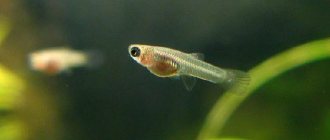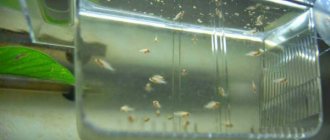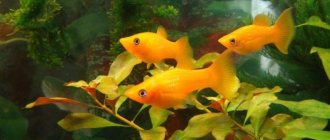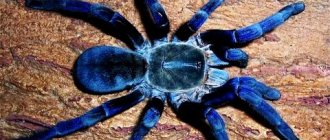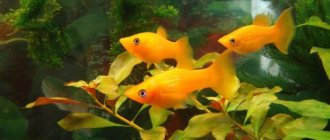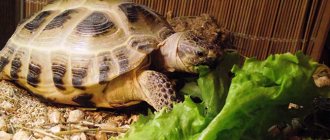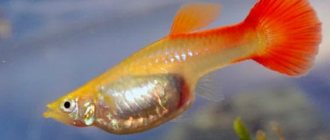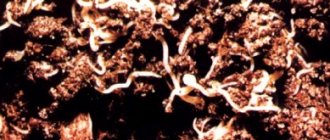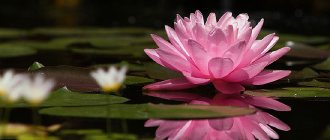author: fisher 03/17/2016 0 Comments
Family: Apogonaceae
coral fish
Tulle apogon Kauderni (Pterapogon kauderni), or tulle cardinal, is a coral fish from the extensive Apogonidae family, consisting of 33 genera and more than 350 species. Most of the fish represented in this family are less than 10 centimeters in size, making them ideal for keeping in an aquarium. Even the largest of them usually do not exceed twenty centimeters in length.
The body of the apogones is elongated and slightly flattened laterally. The distinctive features of all species of the family are large eyes, high fins, with the dorsal fin divided into two approximately equal parts, and bright coloring, with a predominance of warm tones (yellow, red, brown). A significant part of the species has spots, transverse or longitudinal stripes on the body.
Tulle apogon
The large eyes of fish indicate that they are active at dusk; they spend the day hiding in caves or other shelters available to them.
Almost all Apogonidae are marine fish and only representatives of the genus Glossamia (11 species) live in fresh water bodies of Australia and New Guinea.
There are species in the family that can live in both salt and fresh water, for example Apogon amboinensis, sometimes, although very rarely, it is imported as a freshwater fish.
But let's return to tulle apogons (hereinafter referred to as tulle apogons ). In nature, their size reaches seven centimeters; in an aquarium it usually does not exceed five.
The coloring of the tulle apogons consists of black vertical stripes and light blue dots scattered across the silver-shimmering body.
The first specimens of tulle apogons were caught off the Banggai Islands back in 1920. However, a scientific description of the species was made only thirteen years later. After which the species was forgotten for many years, and was rediscovered by American ichthyologist Jerry Allen only in 1994, who introduced it to the general public.
Since 1996, tulle cardinals began to appear in European marine aquariums. The first specimens were sold to aquarists as part of the Interzoo animal exhibition, but without any guarantee that the fish would survive in captivity.
Some time later, ichthyologists Vaghelli and Erdmann made an expedition to the Bashtan Islands (northeastern part of Sulawesi Island, Indonesia), during which the habitat, range and biology of the species were described.
The species lives exclusively in coral reefs and marine meadows covered with the seagrass Enhalus acoroides, as well as lagoons and mangroves of the Banggai Islands in central East Sulawesi.
The distribution range of tulle apogons does not only cover an area of 700 kilometers around the Banggai Islands, as previously thought. In fact, it is much wider and includes the islands of Bandang, Kembongan and South Peleng. Moreover, they were found at the mouths of streams that received fresh water and in port areas polluted by industrial wastewater. At the same time, the depth of fish habitat ranged from 50 cm to 20 m, and the water temperature was +28C and higher.
Recent research in this direction has further increased the area where tulle cardinals to 10,000 km2.
Young tulle apogons , 10-15 mm long, for protection purposes, gather in small flocks of 2-12 specimens, which are kept among the needles of diadem sea urchins (Diadema selosum), between the tentacles of various anemones (for example, symbiotic anemones Slichodaclyla, etc.), or in the mushroom coral Heliofungia acliniformis.
Tulle apogons among the spines of a diadem sea urchin
Having reached the age of six months, juvenile tulle cardinals gather in large flocks, which in some cases can reach up to 500 individuals. Usually, they do not exceed 20 copies.
Adult apogons live in pairs and hide in highly branched hard corals (Acropora sp., Monlipora digilala, Serialopora hystrix) and fire corals (Millcpora sp.). They often share their habitat with other cardinals, clownfish and pipefish.
Tulle apogons among sea anemone tentacles
Tulle apogones combine all the features of an ideal aquarium fish: they are not large, brightly colored, have interesting behavior, are resistant to diseases and, finally, they reproduce quite easily in an aquarium. Thanks to these qualities, they can be recommended even for beginner aquarists. Unlike Pomacentras, which are also popular in marine aquariums, Apogons are not aggressive and can be kept with any small peaceful species.
It is recommended to purchase young fish that easily get along with each other in a common aquarium. Tulle apogons be planted in the aquarium at the same time. This species can be kept in both reef and regular marine aquariums. Tulle apogons are not very active fish; they often stand hidden among the thickets of corals.
Like other apogons, tulle cardinals do not tolerate transportation very well, and the losses are too great. Therefore, pet dealers are not very willing to sell wild-caught cardinals.
Keeping tulle apogons in the aquarium
In nature, tulle apogons live in flocks, so in an aquarium they can be kept in a group; keeping them alone is not excluded. At the same time, an aquarium with a volume of 150 liters or more is sufficient for them, where they prefer to stay in shaded areas.
In an aquarium, tulle apogons with animals living within the boundaries of their natural range. Several adult pairs can coexist only in a very spacious aquarium, more than 1000 liters (at the rate of 4 individuals per aquarium 120 cm long), with many hiding places. In smaller containers, a pair of adult tulle cardinals will persistently drive away any relative from their territory, until the trespasser dies from stress and exhaustion.
Tulle apogon
Most cardinals, including tulles, are nocturnal, but in the aquarium fish often change their rhythm of life and become active during daylight hours, although the peak of activity is still at dusk.
Due to their twilight lifestyle, cardinals prefer dim lighting, crystal clear water, and a temperature of +24-26C.
Diet of tulle apogons
In nature, the diet of tulle apogons consists of zooplankton, consisting mainly of small crustaceans, their larvae and fish fry. Studies of the stomach contents of fish have shown that the size of the food particles they eat is 0.1-14 mm. The best time to feed is late evening or early morning. In the aquarium, cardinals eat well live and frozen brine shrimp, daphnia, cyclops, coretra, gammarus, etc. Over time, the fish can be offered chopped meat of shellfish, shrimp, and squid.
Experience in raising fry of Kaudern's tulle apogon
Breeding marine fish is not only extremely difficult, but also terribly interesting. We bring to your attention an article by Andrey Ospina, one of the regulars of our Marine Forum, about the successful experience of breeding tulle apogons. Brief information about the natural habitats and features of keeping this species can be found in the article by Andrey Telegin “Caudern's tulle apogon”.
Greetings to all marine aquarium lovers! My name is Andrey, I have been involved in the sea since 1978.
The aquarium with a capacity of 600 liters was made in 1989 and has already survived three restarts. The last time the aquarium was reconstructed was on April 2, 2005. Net (internal) dimensions of the aquarium: length 125 cm, height 80 cm, width 60 cm, depth of the water column to the sand 70 cm.
| General view of the aquarium (photo from 2006) |
Now the system looks like this:
- Aquarium
with DSB of fine aragonite sand about 10 cm high, about 60 kg of live rock and some old coral skeletons. - Samp (open filter):
(LxWxH) - 90x45x40 cm, in which there is a layer of coarse aragonite sand covering a bottom area of 50x45 cm and caulerpa grows (you can say - refugium, water level 20 cm); illuminated by two 13 W T5 fluorescent lamps with a color temperature of 6500 K. In addition, two flotators (Tunze 230/3 and H&S 110-F2000) and a carbon filter are located here. - Pumps
: return pump EHEIM-1260, mixing pump TUNZE-7400/2 with controller TUNZE-7091 (operates in wave mode) and another HAGEN pump - Powerhead-420 (blows through the left corner and accelerates the surface, ensuring better drainage of the film from the surface). - Lighting
: Arcadia 3 Series Pendants lamp - two metal halide lamps of 150 W (14000 K), two fluorescent lamps of the T8 standard of 30 W (actinics), two built-in timers (separate inclusion of MG and LL). - The water temperature in the aquarium is not specifically regulated and in winter it is usually within the range of 25oC-27oC.
- For changes and topping up, I use reverse osmosis water obtained using a reverse osmosis filter (Aquapro-580).
| General view of the external filter (photo from 2005) |
Inhabitants
Fish:
Zebrasomas - yellow and yellowtail ( Zebrasoma
flavescens
and
Z. xanthurum
), pajama wrasse (
Pseudocheilinus hexataenia
- bellied chrysiptera (
Chrysiptera leucopoma
), yellow tamarin (
Halichoeres chrysus
), a pair of clownfish (
Amphiprion ocellaris
), and apogons - a pair of tulle Kauderna (
Pterapogon kauderni
) and a pair of spotted spheromia (
Spheromia nematoptera
).
Coelenterates:
Two large sea anemones (host anemones) have been living since 1998, various disc sea anemones ( Rhodactis
indosinensis , Discosoma sp
.
), soft corals - two different types of sarcophyton (
Sarcophyton glaucum
and
S. sp . ), lithophyton (
Lithophyton arboreum
), two types of sinularia (
Sinularia dura
and
S. sp . )
, zoantharians (
Zoanthus sp ., Palythoa sp .
), several species of clavularia (
Pachyclavularia violacea , Clavularia viridis , C. spp
.), gorgonians (
Euplexaura sp .
), stony corals
( Goniopora sp .
) and physogyra (
Physogyra lichtensteini
).
Crustaceans:
Boxer shrimp ( Stenopus hispidus
), cardinal shrimp (
Lysmata debelius
), hermit crabs (
Pagurus sp
.)
You can learn more about the aquarium and its history, and also ask questions to the author at the Marine Forum
This article will focus on tulle apogons (
Pterapogon kauderni
).
I will try to describe my experience of feeding their fry in as much detail as possible.
| First spawning of tulle apogons ( Pterapogon kauderni ) |
I got a pair of these fish in October 2004. They spawned for the first time in early 2005. Then I managed to catch the male and put him in the sump. He carried the fry in his mouth for 24 days, and on the 25th day I found a male with an empty mouth, eating all sorts of bugs in the samp... The fry were no longer there - apparently he managed to eat them.
| A male with fry in his mouth in a samp (photo from 2005) |
In the fall of 2005 (November 14), tulle apogons again spawned eggs.
I did not catch the male with the fry - I thought that I was not yet ready to feed the fry, and the conditions in the sump were not suitable at that time, and there was nowhere else to put them.
On December 8, 25 days after spawning, the male released the fry. Five of them were hiding among the tentacles of the sea anemone, and its owners - the clowns - did not pay the slightest attention to the young apogons and did not even try to drive them away or eat them. And this despite the fact that under the same sea anemone lay another clutch of clown eggs!
It’s a pity that I didn’t have a camera at hand and I missed the opportunity to take wonderful shots: the small fish swimming among the huge tentacles of the sea anemone along with the clown fish looked simply amazing.
I was amazed by the huge size of the fry: after all, they had all just been sitting in the male’s mouth!
Of course, I decided not to leave the fry in the aquarium and placed them in a sump. During the transfer, one of them was missing and the fugitive was discovered only in the evening. Somehow he managed to slip out of the net, remained in the aquarium and sat calmly in the sea anemone all day. The clowns never touched him, and other fish might have wanted to, but no one had any desire to get into the sea anemone. Catching the fry after it had gained experience of living freely in an aquarium turned out to be much more difficult: it ran away from the net just like an adult fish, and it was difficult to drive it out of the sea anemone.
| Sump overgrown with algae (mainly Caulerpa) |
The current in the sump is strong enough for the fry. To reduce its speed, I directed the outlet of the water drain pipe from the aquarium into the wall of the sump; as a result, the flow reflected from the wall moved along the flotator located here. Thus, the speed of the current was significantly weakened.
Immediately I made a serious mistake: I didn’t leave the light on overnight and in the morning I was missing two fry. Probably, they were unable to navigate normally in the dark and died when they found themselves in a zone of strong current. The mistake, of course, was immediately corrected - I made a weak diffused night light from an 8-watt fluorescent lamp, covered with matte tape and insulating tape to reduce the light flux.
The fry gathered in a flock and spent almost all the time in one place with a moderate current and a small free space among the algae growing in the sump.
For reasons beyond my control, the first photos were taken only a week later.
| Tulle apogon fry in a samp, a week after they left their father (December 15, 2005) |
Since I did not prepare specifically for breeding apogons, the food supply had to be prepared on the fly. I loaded the brine shrimp eggs into a 2-liter jar with aquarium water and a spray bottle. But, remembering my old problems with feeding clowns, I could not come up with a convenient and reliable way to separate the hatched brine shrimp from the shell, which is very dangerous for the fry.
| Jar of incubating brine shrimp eggs |
The main thing is that everything had to be done very quickly. Here my wife helped me, suggesting that I use a plastic food trough, which we used for pouring jellied meat, to remove the brine shrimp. One glance was enough to understand how quickly and easily it could be used to make a device for separating brine shrimp from the shell. To do this, all you had to do was install a partition made of anything in the trough, dividing it into two parts. But the partition is not solid, but with a small space between its lower edge and the bottom.
| Homemade separator for separating Artemia nauplii from the shell |
I made the partition from a piece of aquarium foam. Koryttse was positioned so that one side was in the shadow, and the other was illuminated by light from the lamps in the sump. I placed a mixture of Artemia nauplii and shells in the shaded part of the trough. Then the nauplii, striving for the light, themselves moved under the partition into the light part of the trough and accumulated near the most illuminated wall, or rather, in the corner closest to the lamps. All that remained was to collect it with a syringe and pour the clean artemia into the sump to feed the fry.
I tried to feed the fry often. The first two days were on the weekend and it was possible to feed 5-6 times a day. In the future - one feeding in the morning and from 18 to 23 hours three more feedings. I kept this regimen for a month.
From the third week I started trying to give the young apogons frozen food - cyclops and microplankton (they look like the same cyclops or very small daphnia, but they are called microplankton). At first the fry ignored the still food, and to get them interested, I even mixed live brine shrimp with frozen cyclops. But the fry showed interest in plankton and cyclops only from the fifth week. From that moment on, I constantly added these foods to their diet. It is best to give frozen food during the first evening feeding: the fry, having become hungry during the day, are more active in grabbing everything they can eat.
Of course, a well-ripened samp played a very important role in feeding the fry. By the time they appeared, a huge amount of all kinds of micro-living creatures had grown in it. During the first days, the fry ate only brine shrimp and, possibly, some very small zooplankton. Starting from the second week of life, they began to eat some small white polychaete worms. These worms appeared in large numbers in the sump when the main light was turned off and, in diffuse night light, quickly swam at the surface of the water, which made it easy for the fry to catch them.
There are a lot of amphipods ( Gammaridae
sp . living
, but at this stage I did not see the fry eating them. Or maybe they ate, but only very small ones.
The fry do not specifically hunt for food, but stand in a flock towards the current and wait for something to swim to them. They grow quickly.
The next step was to accustom them to eating mainly frozen food, the same food that I feed all the fish in the aquarium. This can be considered a key point in feeding the fry. In the seventh week, I decided to try to introduce into the diet of the fry the food that I make for adult fish. It is a mixture of frozen squid, fish and krill meat grated on a very fine grater. All this is mixed and flakes (Sera Marin) and granules (Sera GranuMarin), intended for feeding marine fish, are added to this mixture. Everything is mixed again and stored frozen in the refrigerator.
| Ready-made frozen food mixture |
I took a certain amount of this mixture and mixed it in a small amount of sea water from the aquarium, adding ice cream cyclops and plankton, and gave the resulting mixture to the fry. To my joy, they did not refuse. At first they ate very carefully, perhaps choosing the most delicious and familiar. But after a few days they began to simply rush to this food, just like adult fish.
With this food, the fry receive everything they need for their normal growth (microelements, vitamins, etc.). So, after switching to it, the main problem of feeding artemia is eliminated - monotony and unbalanced food.
In my opinion, now the fry are moving on to a full-fledged aquarium life and are no different from any other young fish bought in a store and “planted” on artificial food.
In the ninth week, the fry began to hunt gammarus and thus received another source of food. Now young apogons constantly examine the algae thickets in the sump in search of amphipods.
| Tulle apogon fry in a samp, three weeks after they left their father (December 30, 2005) | |
| Four weeks have passed (January 6, 2006) | |
| Exactly one month from the day of the first photo, the fry are five weeks old (January 15, 2006) | |
| The fry are six weeks old (January 21, 2006) | |
| Tulle apogon fry in a samp, after eight weeks of independent life (February 1, 2006) |
Around December 22 - two weeks after the male released the batch of fry described above - the next spawning of tulle apogons took place. However, the male apparently had not yet recovered from a long hunger strike and was not ready to carry eggs and young for another 25 days. On the fifth day after spawning, he ate the eggs.
The next spawning took place on January 22, 2006. This time the male has fully recovered and gained the necessary fat reserves. Exactly 25 days later, on the night of February 16, he released the fry. I don’t know how many there were, but the next morning I managed to find only one. This time he was floating among the branches of a medium gorgonian; this was very dangerous for him, since the gorgonian is not such a reliable defense as the sea anemone. The fry was caught and placed in a pre-prepared container installed in the sump. The fry was very active and immediately started eating Artemia nauplii. He looked great all day, but died at night for some unknown reason. This suggests that the first 24 hours after the fry leave their safe haven (the mouth of their dad) are the most critical for them. After all, in the first case, two fry died on the first night. Then I decided that it was my fault, but in this case everything was done to avoid the accidental death of the fry, but he died anyway. Of course, the sample size does not allow us to draw serious conclusions.
This is where I end my story about raising tulle apogon fry/
Let me just say in conclusion that the first three fry are doing well and continue to grow. They became very nimble and even more timid.
| Young apogon in sampa (fish 2.5 months old) |
Text and photo: © Andrey Ospin
Fields marked with * are required.
Reproduction of tulle apogons
Tulle cardinals brood eggs in their mouths. Moreover, this is done exclusively by males. But during the mating season, females initiate spawning. The female, ready to spawn, pursues her chosen one for a long time—sometimes for hours—until she forces him to spawn. Which lasts only a few seconds, during which the female spawns from 5 to 25 orange eggs with a diameter of 2.5 mm, which the male immediately takes into his mouth. From this moment on, he begins to “fast”, since he does not eat during the incubation of the eggs. Incubating males are easily recognized by their “swollen” gill covers and enlarged lower jaw arch.
Male tulle apogon with fry in mouth
Approximately 25 days after spawning, the larvae hatch from the eggs and soon leave the male's mouth. He usually releases the fry next to the Diadem sea urchin (Diadema selosum), whose spines serve as good protection against potential enemies both in nature and in the aquarium. In natural conditions, in addition to sea urchins, such protection can be provided by the tentacles of some species of sea anemones.
It is immediately noticeable from the “deflated” mouth of the male that he has freed himself from offspring. The starting food for the fry is newly hatched Artemia nauplii and live “dust”. When feeding artemia, it is necessary to ensure that the nauplii are well separated from the membranes; the fry also eat them.
In general, breeding tulle cardinalfish is not difficult and is now quite common, so specialized farms have mastered the mass breeding of these fish quite well. And although during the year you can get only 150-170 fry from a couple of producers, fish breeders living in the coastal zone of tropical seas can make good money by breeding this species, having a sufficient number of producers available. As for natural populations, in this case they would be preserved.
Currently, many natural populations of tulle cardinals are in great danger due to massive catching for keeping in aquariums. According to experts, in recent years, 50-60 thousand fish of this species were caught monthly off the coast of Sulawesi and Bali, which were then sent to large importers in Europe, North America and Southeast Asia. But due to the small number of offspring and limited distribution area, populations do not have time to recover due to mass fishing. All this led to the need to include tulle apogones in the International Red Book as an endangered species.
Tulle Cardinal / Pterapogon kauderni
20.02.2021
We are starting to publish articles from the book “Reef Aquarium from REEF EXCLUSIVE” by A.V. Kolesnikov
from the author...
I was prompted to write this book by the almost complete lack of complete, systematized information about Marine Aquariums. But there is a lot of mutually exclusive information; it is difficult for a beginner and even a fully experienced aquarist to understand it all. I won’t go into the scientific “wilds”; a lot has already been written about this, but it’s of little use, I’m a practitioner and tried to figure it out myself, experimented, observed, and drew conclusions. Compare other people's work with my own, etc. I constantly travel to the natural reefs of tropical countries and sea farms, personally collecting information! A few years later I came to the conclusion: “Much is simply far-fetched and erroneous,” including some “authoritative” publications and opinions. In general, I have prepared a very practical and specific “Guide to Action”. That is, by following the recommendations I outlined below and observing all the rules, you can create the perfect “Home Sea Reef” with your own hands!
So, let's begin:
1.Water treatment:
The most important element in our business is Water! That is, it must be purified through a Reverse Osmosis purification system. There are many options for osmotic systems on the market and prices vary greatly. I advise you to buy just the necessary set of flasks for the membrane and adsorbents, since you will still have to periodically change all the filter elements, and simply throw away the “post-filter”! In general, you will need a filter with five containers for adsorbents and one or two flasks for the membrane. The first flask is a coarse filter. The second and third ones in sequence are filled with pure activated carbon. Next comes a reverse osmosis membrane (from any manufacturer, the only difference is performance). At the end, we add (not on the diagram), one after the other, two flasks with Deionizing resin (Tulsion MB -115 from Thermax Ltd (India) or Purolite® Virgin MB478 (Romania) other options are most likely not suitable) to purify water from silicates. We remove the “Postfilter” containing silver, etc. (detrimental to marine animals), indicated in the diagram. At the outlet, the water should have zero electrical conductivity, that is, it should be almost distilled. This is exactly the kind of water we need. More details
05.06.2021
we continue publishing articles from the book by Alexander Kolesnikov “Reef Aquarium from REEF EXCLUSIVE”
Continuation…
14. Soil in a marine closed system is not needed at all, it only accumulates detritus and other decomposing products, and this is like a “time bomb”. It will explode during a large emergency water change, any rearrangements or re-formation of the reef, which happen no matter what. This entire “Ripe System” with a thick layer (from 3 to 10 cm) of sand or coral chips will go rotten in a couple of hours if there is a power outage, as soon as you even slightly upset this unstable balance, you won’t be able to get by without problems... which we often see from numerous messages on forums. Example: “I dug up the sand, rearranged the stones and sprinkled the fish with crypt, HELP!!!” A system with a thick layer of sand about 8-10 cm “DSB” is generally called a “time bomb.” Sooner or later it will explode 100% and everything will die. In the depths of such a layer of soil, as organic matter accumulates, rotting processes develop, as a result of which Hydrogen Sulfide and other substances harmful to marine animals begin to be intensely released. If the integrity of such a “DSB” is violated, you provoke an increased release of all this gas, etc. mixture into the water, which leads to severe poisoning of all inhabitants of the aquarium.
Based on this, I want to offer you my version of “reanimation” of a very old marine system: First of all, we remove all the soil (“siphon it off” with a hose along with water), rinse it with sea water and return part of it back, in a layer no thicker than 1.5 cm (only for aesthetics). I advise you to remove it completely and forever. We clean everything from sediments, fouling and detritus, including glass, the “drain shaft” of the pipe, LCD (if possible) and SAMP. Since only freshly salted water that has stood for a couple of hours can be considered ideal (salt of excellent quality in the right proportions, with ideal osmotic water). We take this water as a standard and regularly replace the polluted aquarium water with this ideally clean one. We do 3-5 changes of 20-30% once a week + good bacteria every other day, do not feed the animals for the first 3-5 days, then we feed them every other day, but only with food with a minimum protein content, and so on until the N/F parameters arrive back to normal. In the future, we make regular scheduled replacements of 10-15% per week. Yes, the result will not be immediate, but it will definitely be... a little patience. There will always be ideal water in your system and everything will always be perfect! All harmful substances, including fish waste products, will now be removed from it with water changes. Stones and sand will release harmful substances and will quickly be cleaned to perfect condition. That is, the content of nitrate and phosphate in them will tend to “zero”, our water is perfectly clean and we must not forget about the Nitrate-Phosphate balance and their required quantity, adding the missing norm and leveling the balance 1/10-20. I strongly do not recommend reducing high N/F with the help of Vinegar, Sugars, Vodka, etc. All of them are very harmful to corals, especially Acropora and other SPS. A reactor with Biopellets is quite sufficient for this purpose.
05.05.2020
Balling method Tropic Marine
Balling method for maintaining calcium and carbonate levels. A balanced amount of calcium creates optimal conditions for the growth of corals and coralline algae. By jointly influencing the levels of Calcium, Alkalinity and pH in the water, it is possible to achieve calcium saturation, which is necessary for the growth of corals and coralline algae...

